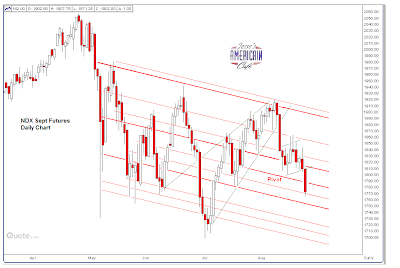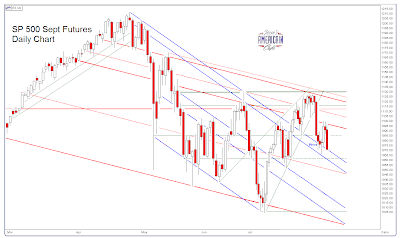"Economics is haunted by more fallacies than any other study known to man." Henry Hazlitt
The argument that 'tax cuts for the wealthiest few stimulates growth' aka the trickle down theory needs to be buried alongside the 'efficient markets hypothesis' and the other principle beliefs of voodoo economics that have brought the US from the world's greatest nation to third world status in a generation.
It was the irresponsible tax cuts enacted by Bush II while increasing military spending on two wars, one highly discretionary, along with the increasing financialization of the economy through deregulation, fraud, 'one way globalization,' and crony capitalism that have undermined the foundation of the American economy.
The banks must be restrained, the financial system reformed, and balance restored to the real economy before there can be any sustained recovery.
 h/t The Economist's View for the cartoon
h/t The Economist's View for the cartoonThe following charts are from the ContraryInvestor but all annotations and comments are mine.
Think about what this chart below is saying. Will a return to the status quo through Fed intervention 'work?' Is austerity directed at the middle class the answer, as in the suffering endured by the many in the Great Depression?

What would happen if the economy 'recovered' with the same fundamentals in place? Fundamentals such as an overly large financial sector, increasing wealth disparity, and a stagnant median wage?
Can 'the many' continue to borrow to maintain a constant standard of living? Can a democracy be maintained in conditions that start to resemble a third world country? How long before a 'strong man' rises to take control of the political situation on behalf of the national society of workers? And how long after that would it be before the industrialists and oligarchs lose control of this strong man, as they always seem to do?
Can the US afford to maintain 800 overseas military bases while the domestic tax base continues to erode through a parasitical transferal of wealth from the many to the few based on leverage, speculation, monopoly, asset bubbles and fraud?
Closer View of the Rise of Neoliberal Economics and the Ponzi Economy US Federal Debt Only as a Percent of GDP Since 1792
US Federal Debt Only as a Percent of GDP Since 1792
What the US needs right now, more than ever, is a coherent industrial policy and a national strategy focused on the median wage, a serious reform movement, a reduction in its military spending, and a set of encompassing social principles with a longer term vision for the country as its goal.
Americans may not trust government as a recent tenet of dogmatic faith, but in doing so they are entrusting their futures to other people's governments, and soulless multinational entities who are in fact using globalization and the 'free markets' to aggressively advance their own ends and benefits, which are probably antithetical to yours.
Bringing a dogmatic neo-liberal bias for "free markets"
(ironically promoted by political neo-conservatives) into a game where every other major country is executing a well thought out industrial policy based on increasing net exports is like bringing a knife to a gun fight, and then stabbing yourself in the back as an opening move.















































































